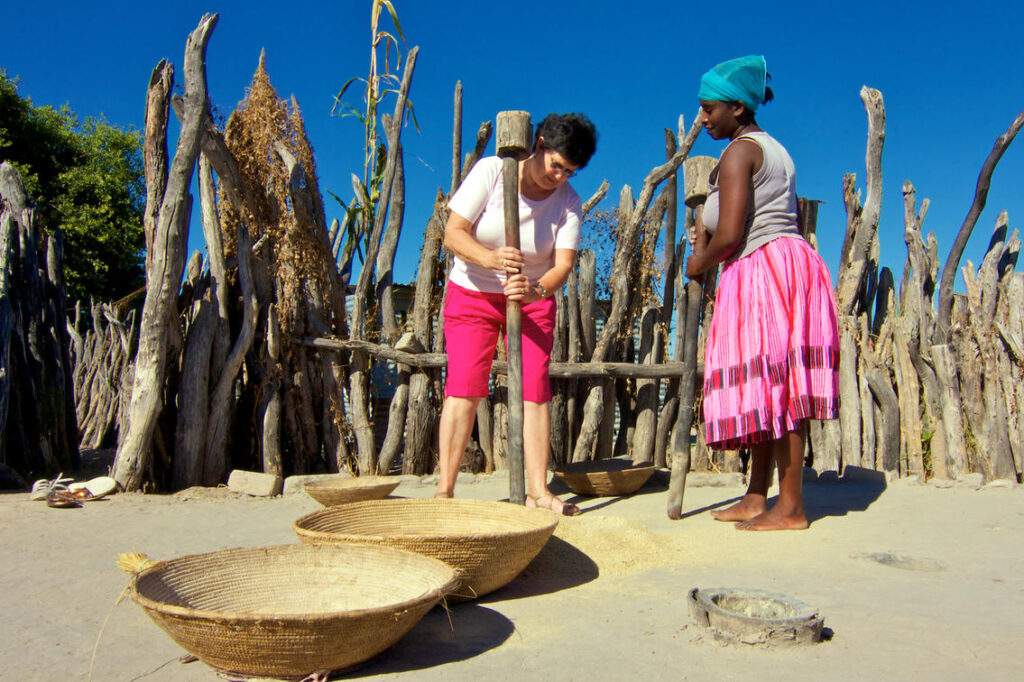Traditional Ovambo Homesteads: An Introduction to the Culture of Namibia
Namibia is a beautiful country that is home to a variety of cultures, many of which have been in existence for centuries. One of these cultures is the Ovambo people, who live in traditional homesteads across the country. This article will provide an overview of the Ovambo homesteads, discussing their history, culture, architecture and more.
What are Ovambo Homesteads?
The Ovambo people are the largest ethnic group in Namibia, making up more than half of the population. Ovambo homesteads are traditional settlements that have been in use for centuries, and are still in operation today. They consist of several round huts, called rondawels, which are made from mud and thatch and are surrounded by a fence. The huts are used for sleeping, cooking and other activities, and they are typically arranged in a circular pattern.
History and Culture of Ovambo Homesteads
Ovambo homesteads have a long and rich history, and they have been in use since the 16th century. The Ovambo people are known for their strong sense of community and family, and they live in extended family units, with several generations living together in the same homestead.
The Ovambo culture is also known for its music and dance, with traditional dances such as the ohumba, the okazomba and the oshikwanyama. Music is an important part of Ovambo culture, and drums are used to accompany the singing and dancing.
Architecture of Ovambo Homesteads
The architecture of traditional Ovambo homesteads is quite unique, and it is often characterized by the use of round mud and thatch huts. The huts are typically arranged in a circular pattern, and they are surrounded by a fence that is made from wood, reeds or other materials. The huts are typically used for sleeping, cooking and other activities, and they are also used to store food and other goods.
The Ovambo people also use traditional methods of construction, such as wattle and daub, for the walls and floors of their homes. The floors of the huts are often made from clay, which is mixed with cow dung and then sealed with a mud-based plaster.
Modern Day Ovambo Homesteads
Today, many of the traditional Ovambo homesteads are still in use, although some of them have been modernized. Many of the huts have been replaced with more permanent structures, such as brick homes, and the traditional methods of construction have been replaced with modern building techniques.
In addition, the Ovambo people have also adopted some modern technology, such as solar power and internet access. However, the traditional culture and lifestyle of the Ovambo people is still very much alive, and the homesteads are still used as places of communal living and gatherings.
Conclusion
Traditional Ovambo homesteads are a unique part of Namibian culture, and they offer a glimpse into the past, as well as the present. These homesteads are characterized by their round huts, their traditional methods of construction, and their strong sense of family and community. They are also still in use today, with many of them having been modernized to include modern technology and amenities.
No matter if you’re looking to learn about Namibian culture or just want to explore a traditional way of life, the Ovambo homesteads are well worth a visit. They provide an opportunity to immerse yourself in the rich history and vibrant culture of the Ovambo people, and to experience firsthand their strong sense of community and connection to the land. Whether you’re interested in architecture, culture, or simply seeking an authentic cultural experience, a visit to the traditional Ovambo homesteads is sure to leave a lasting impression.

